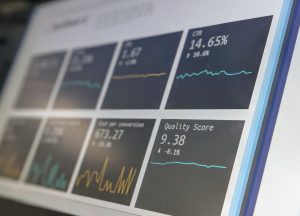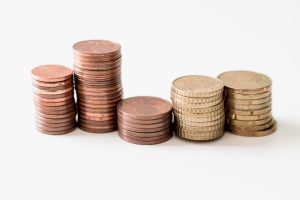Forex trading is an exciting and profitable venture if done correctly. Day trading, in particular, involves buying and selling financial instruments within a single day, and can generate significant returns if executed appropriately. One tool that can aid in day trading is a moving average. In this article, we will discuss how to day trade forex with moving averages.
Introduction to Moving Averages
Moving averages, or MAs, are popular technical indicators used in forex trading. They are used to smooth out price fluctuations and provide a clear picture of the trend direction. A moving average is calculated by taking the average closing price of a currency pair over a specific period. For instance, a 20-day moving average will calculate the average closing price of the currency pair over the past 20 days.
Moving averages can be applied to any time frame, including daily, weekly, or monthly charts. However, for day trading, shorter-term moving averages are preferred, such as the 5-day or 10-day moving average.
The Two Types of Moving Averages
There are two types of moving averages: Simple Moving Averages (SMA) and Exponential Moving Averages (EMA). The main difference between the two is the weightage given to the most recent data points.
SMA gives equal weightage to each data point in the calculation. For instance, a 5-day SMA will give equal weightage to the closing price of the last five days. On the other hand, EMA gives more weightage to recent data points. In other words, the most recent data points have a greater impact on the calculation. This makes EMA more responsive to price changes than SMA.
How to Use Moving Averages in Day Trading
Moving averages can be used in several ways in day trading. Here are some of the most popular strategies:
1. Moving Average Crossovers
One of the most popular ways to use moving averages in day trading is through crossovers. A crossover occurs when two moving averages intersect. For instance, when the 5-day moving average crosses above the 10-day moving average, it is a bullish signal. Conversely, when the 5-day moving average crosses below the 10-day moving average, it is a bearish signal.
Traders can use moving average crossovers to identify potential entry and exit points. For instance, if the 5-day moving average crosses above the 10-day moving average, traders can go long on the currency pair. Conversely, if the 5-day moving average crosses below the 10-day moving average, traders can go short.
2. Moving Average Bounces
Another way to use moving averages in day trading is through bounces. When the price of a currency pair approaches a moving average, it can either bounce off or break through the moving average. If the price bounces off the moving average, it is a sign of support. On the other hand, if the price breaks through the moving average, it is a sign of resistance.
Traders can use moving average bounces to identify potential entry and exit points. For instance, if the price bounces off a moving average, traders can go long. Conversely, if the price breaks through a moving average, traders can go short.
3. Moving Average Slope
The slope of a moving average can also provide useful information in day trading. When the slope of a moving average is steep, it is a sign of a strong trend. Conversely, when the slope of a moving average is flat, it is a sign of a weak trend.
Traders can use the slope of a moving average to identify potential entry and exit points. For instance, if the slope of a moving average is steep, traders can go long. Conversely, if the slope of a moving average is flat, traders can exit their positions.
Conclusion
Moving averages are powerful technical indicators that can provide valuable information in day trading. They can be used to identify potential entry and exit points, as well as provide information on the trend direction. However, it is important to note that moving averages are not foolproof and should be used in conjunction with other indicators and analysis tools for best results. With practice and experience, day traders can effectively use moving averages to generate profitable trades.






